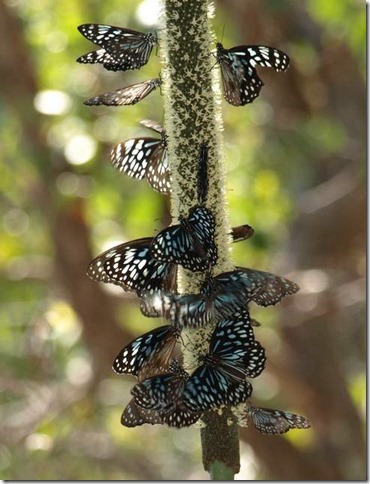1770

VulcanSpirit
Richard & Alison Brunstrom
Fri 4 Jul 2014 10:34
|
We’re still following in Cook’s footsteps, and made the trip to the small
settlement of Seventeen Seventy north of Bundaberg where Cook landed briefly in
May 1770 on his way home from NZ. He stopped first at Botany Bay (now in
Sydney), then at 1770. Here is the memorial cairn, a rather grander and
appealing one than those in NZ:
 Cook came ashore here on 24 May 1770 and stayed for the day, leaving at
0430hrs the next morning. His naturalist companion, Joseph Banks, collected 33
botanical specimens here which got home safely and can still be seen in London.
The immediate area is now the Sir Joseph Banks Conservation Park (just about the
highest level of protection here), but in what we are discovering is true
Australian fashion there is absolutely no information about it available locally
(these guys could learn a thing or two from NZ about separating tourists from
their dollars), and somehow permission has been granted to build a group of posh
houses right in the centre of the Park – probably symptomatic of the endemic
corruption rife in Queensland. Cook shot what he called a bustard here (probably
a bush turkey), and proclaimed it the best eating they had had since leaving
England.
We found said bush turkey Alectura lathamii, helpfully sitting in
a bush next to the track:
 No natives were encountered (Cook noted that the Aborigines, unlike the
Maori, showed almost no interest in Cook and his crew) although they had been
under observation - a party of about twenty came to the beach after the
Europeans had left.
Australia has over 400 species of butterfly; we saw about ten during our
walk here. The most striking were masses, clouds, of the large Blue Tiger
Tirumala hamata. These are poisonous butterflies, related to the North
American Monarchs, whose larvae feed on milkweeds. The trick to being poisonous
is to taste so foul that potential predators leave you strictly alone after one
try, but not to be so poisonous that the predator dies – because that way the
predators would not learn. Clever, eh?
Here are a few of the thousands we saw, massing in the woodland shade
before migrating somewhere. Strangely it’s not clear where – some people say
south at this time of year, others north:
 And here is one in close-up:
 You can see its two clubbed antennae (they have a very keen sense of smell,
using these) and its proboscis (tongue) with which it is sucking up nectar from
a flower.
|